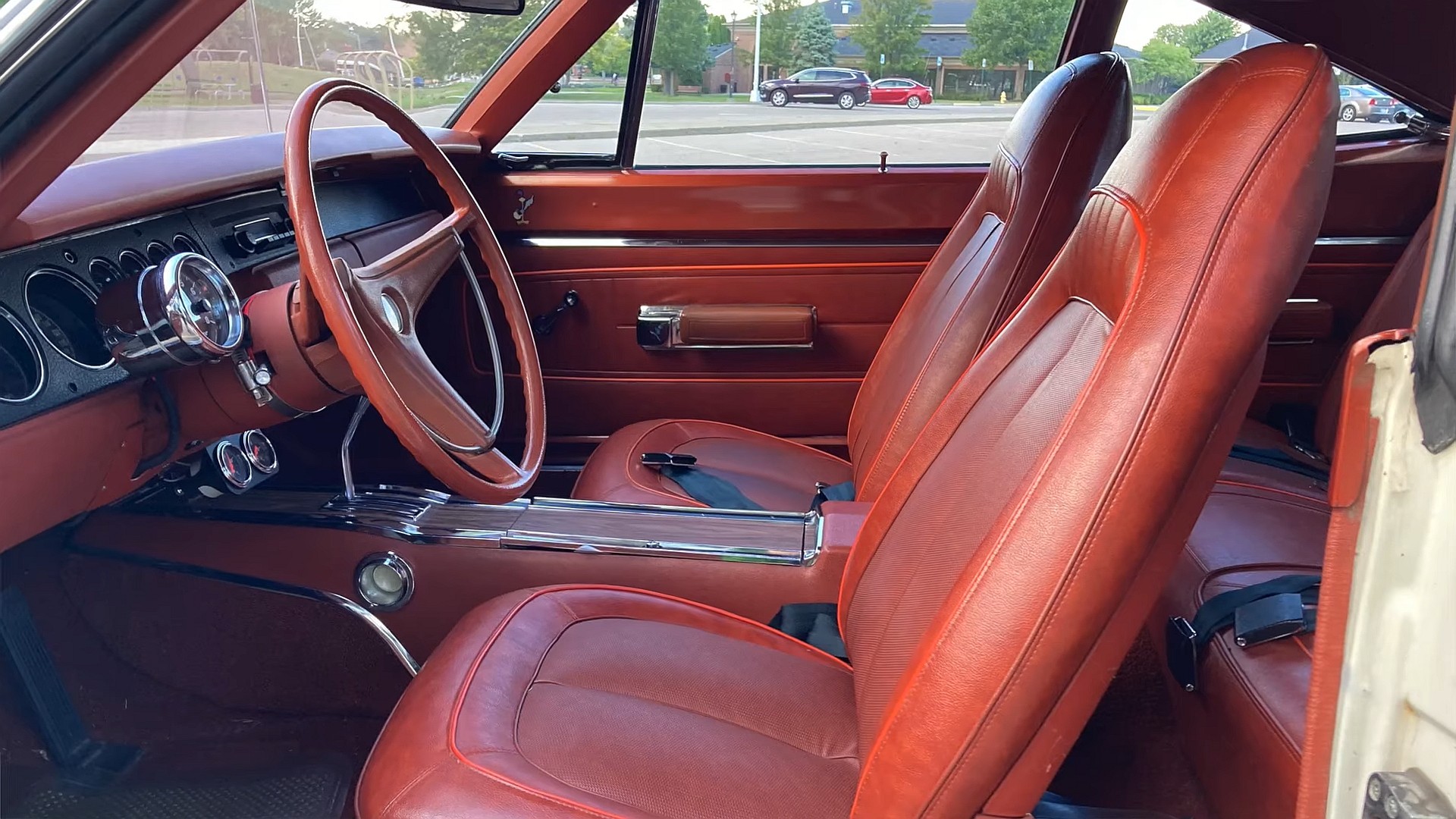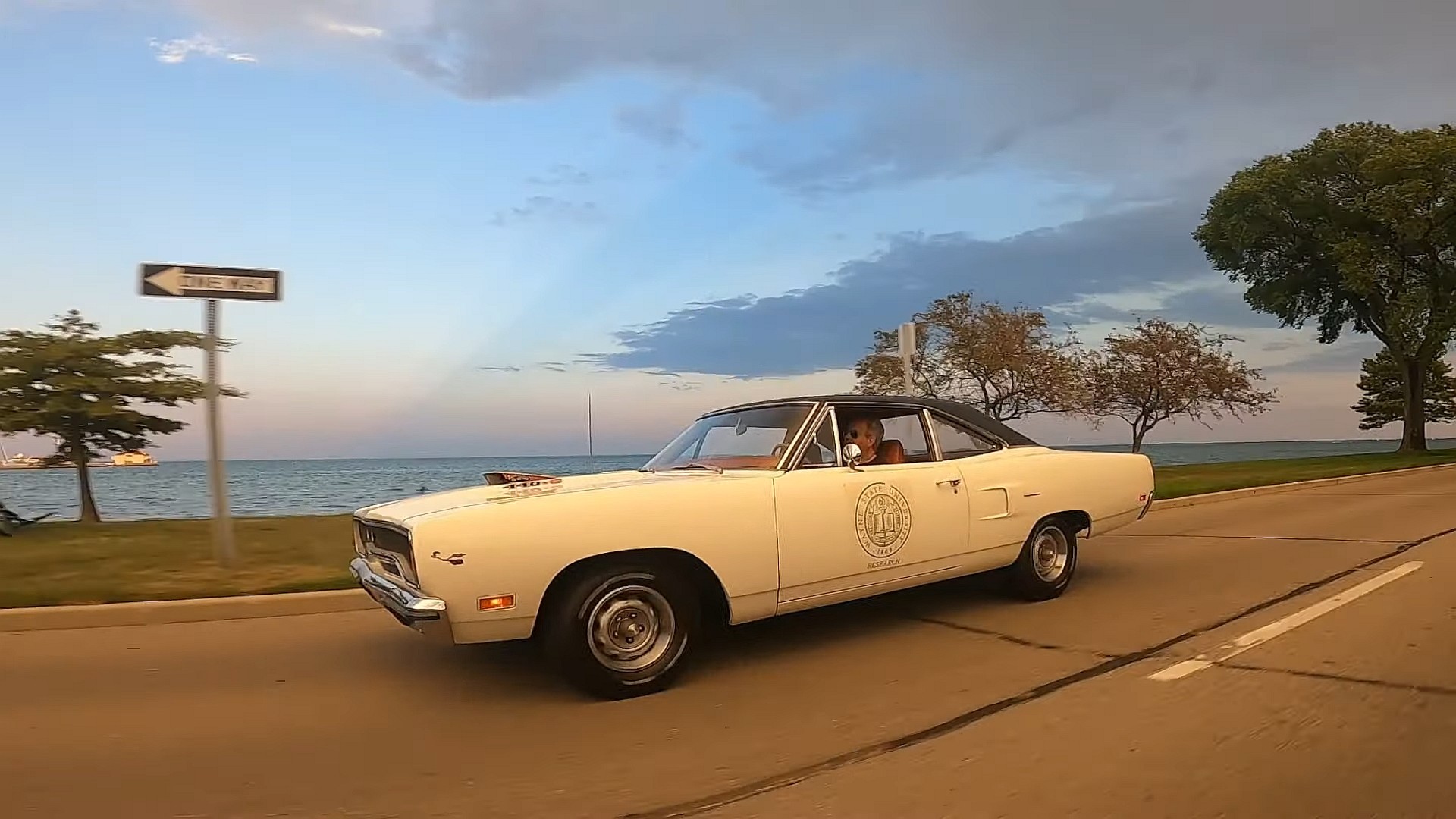When it comes to the Plymouth Road Runner, most Mopar enthusiasts rave about the HEMI version. And for good reason, because at only 2,003 units built from 1968 to 1971, the HEMI Road Runner is a rare bird. But here’s a non-HEMI car that might just be more significant than any other Road Runner out there.
This white and seemingly mundane 1970 Road Runner was purchased new by Wayne State University, which used it to do research for highway traffic safety. It’s the car that helped the university discover that Armco barriers were dangerous on the highway, among other things. As YouTube’s “Muscle Car Campy” puts it, this car might have saved your life.

But why a 1970 Road Runner and not any other vehicle from the era? Well, the university crash-tested unmanned cars by pulling them into traffic signs and guardrails. So it needed a car capable of pulling the said vehicles to 70 mph (113 kph) in about 1,000 feet (305 meters).
The story goes that they looked into every high-performance car available at the time and found the 1970 Road Runner with the 440-cubic-inch (7.2-liter) V8 to be the right vehicle for the job. Fitted with three two-barrel carburetors, the beefed-up RB mill was good for a solid 390 horsepower when new.
Wayne State University kept the car for about eight years until the Mopar was auctioned off in 1978. Come 2022 and the Road Runner has been with Dave Hakim since 1996. And while it’s a whopping 52 years old as of this writing, it looks downright stunning inside and out and it still carries the original Wayne State University stickers on its doors.

But that’s not the only feature that sets this Road Runner apart from its 1970 sibling. There’s also a “50 mph speed restriction” sign on the glove box. It’s there because the university used an elaborate cable and stanchion system to pull the test vehicles up to speed. As the Road Runner accelerated away from the guardrail, the crash vehicle accelerated in the opposite direction, moving at twice the speed. Driving the Road Runner beyond 50 mph (80 kph) would have sent the test vehicles into the barriers at more than 100 mph (161 kph).
But that’s not to say that this Plymouth hasn’t been manhandled like a true muscle car. The owner says he raced it at pure stock muscle car drag events, covering the quarter-mile in less than 13 seconds thanks to a few tune-ups under the hood. Now that’s a cool retirement routine for a muscle car that was used to make highways safer and save lives.
While it has been repainted decades ago and the engine has a few upgrades to brag about, this Road Runner is a true survivor. It left the Wayne State University with only 14,000 miles (22,531 km) on the odo, but nearly all of them were hard miles of pulling heavy Detroit iron into guardrails. Now it has almost 26,000 miles (41,843 km) on the clock, so it’s also a low-mileage classic.
